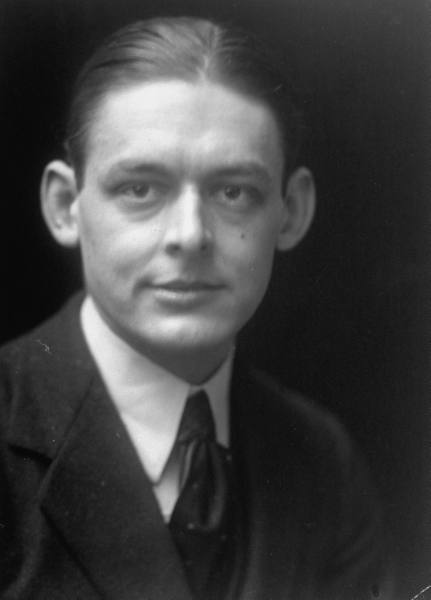
In his masterpiece The Waste Land, T.S. Eliot begins with the famous line “April is the Cruellest Month”. What follows is generally regarded as one of the most important poems of the 20th Century. When T.S. Eliot published his influential work, it was 1922 and he had been living in London for several years. He was far removed from his youth growing up in the gritty neighborhood on the western edge of downtown St. Louis.
For that reason, I’ll forgive him for overlooking August in St. Louis, which to me is far crueller.
But T.S. Eliot wasn’t writing about humidity and how ridiculously hot it gets in this town. He may have been alluding to the prologue of Geoffrey Chaucer’s The Canterbury Tales. He turns it on its head, informing the reader that The Waste Land will be a far darker reading experience.
Personally, I’ve read The Waste Land twice. The first time was about twenty years ago when it was assigned in college. The second time was a few days ago when I realized I was about to write a blog post about T. S. Eliot. On both occasions, getting through it was no easy feat. The Waste Land changes voices and locations constantly. It contains lines in German and mantras in Sanskrit. It alludes to Homer, the Bible, Aldous Huxley, Sophocles, Dante, and even Buddha. I won’t pretend to offer insight into its meaning or explain it’s purpose. Just take my word for it. The Waste Land is a momentous achievement. Read it and it’s impossible to not admire the beauty of Eliot’s prose.
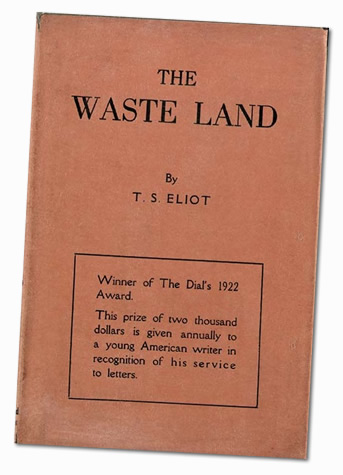
Many haven’t read him, and I’d venture to guess that many more bend the truth and say they have. But find me a person who hasn’t at least heard of T.S. Eliot. Pull up any list of the great poets, and it’s likely his name is on it somewhere. For that reason, it has always surprised me T.S. Eliot is not more recognized in the city he was born and raised in. Eugene Field’s boyhood home in St. Louis is a museum. He lived in St. Louis less than ten years. Scott Joplin’s home is a state historic site. He lived here less than seven.
T.S. Eliot’s time in St. Louis was not a flash in the pan. He was born at 2635 Locust Street in St. Louis on September 26, 1888. He was raised and spent his formative years here until leaving to be educated at Milton Academy and then Harvard. His family was well established in St. Louis. His grandfather was William Greenleaf Eliot, a prominent St. Louisan and co-founder of Washington University.
Recently, I took another great bicycle history tour sponsored by the good people at Trailnet. This one led us up and down Locust Street on the western edge of downtown St. Louis, an area that was once referred to as “Automobile Row”. The area has that nickname because of the large amount of automobile dealerships, showrooms, parts stores, and automotive businesses that once existed there. Another post may be coming about that topic at some point, but Trailnet promoted this tour by claiming we’d see “one of the most overlooked historical locations in the midwest”. The tour was led by Harold Karrabell, a man who previously led me on Trailnet bike tours of Cahokia Mounds, East St. Louis, and Carondelet. As I mentioned in a previous post about the Jacob Stein House, Mr. Karabell has an impressive knowledge of the history of St. Louis. His tours are well-researched, well-organized, and informative. Even better, he prefers to lead these tours while riding a bicycle. And once again, Harold didn’t disappoint. As we rode east along Locust Street, we slowed as we approached the Jefferson Avenue intersection. Harold stopped us in front of a parking lot and pointed out a large plaque on the sidewalk.
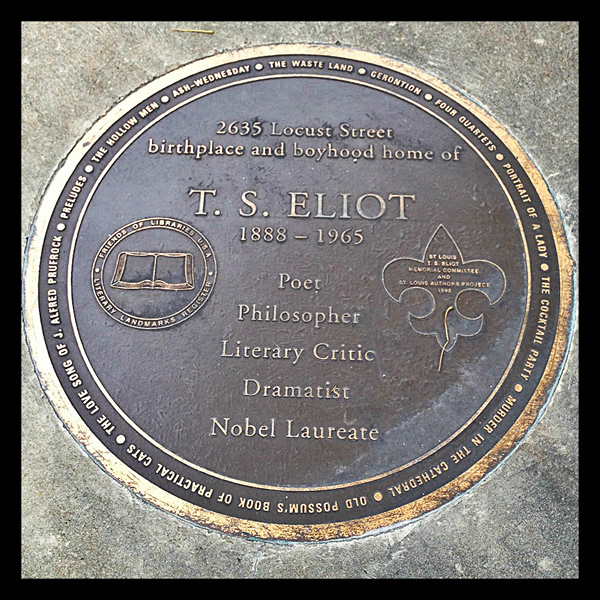
The plaque identifies the location of the home where T.S. Eliot was born and raised. My jaw dropped when I saw it. Over the years, I have ridden or driven past this location hundreds of times. I simply never knew it was there. I had always heard Eliot lived in Central West End, not in the sketchy outskirts of downtown St. Louis. I simply love historical markers such as this. Some people prefer to only see historical places that still exist, but that’s not me. I enjoy seeing places that have changed and thinking about why they did. Why was T.S. Eliot’s home razed and turned into a parking lot? What did the neighborhood look like when he lived there? When T.S. Eliot lived at 2635 Locust Street, the population of St. Louis was almost 700,000. In Eliot’s day, the street was likely teeming with activity. Today, the neighborhood shows no sign of once being a residential neighborhood. Fortunately, one building still stands that can give us a frame of reference between then and now.
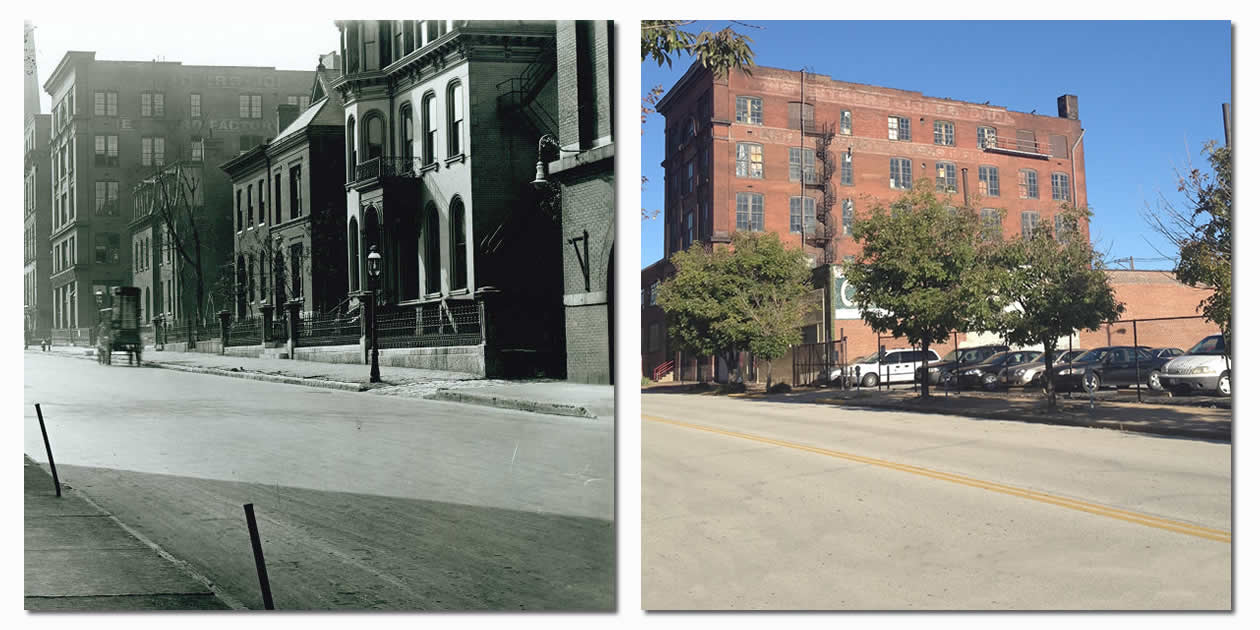
At the time Eliot lived there, Locust Street was a neighborhood in transition. Once residential, saloons and factories started popping up, making it a rougher part of town. Although the Eliot family was wealthy, they remained in the neighborhood during it’s decline because of family that lived nearby. In 1905, the family moved to a new home in the prosperous Central West End. Although this home still stands today as a private residence, T.S. Eliot lived here for less than a year before heading off to school.
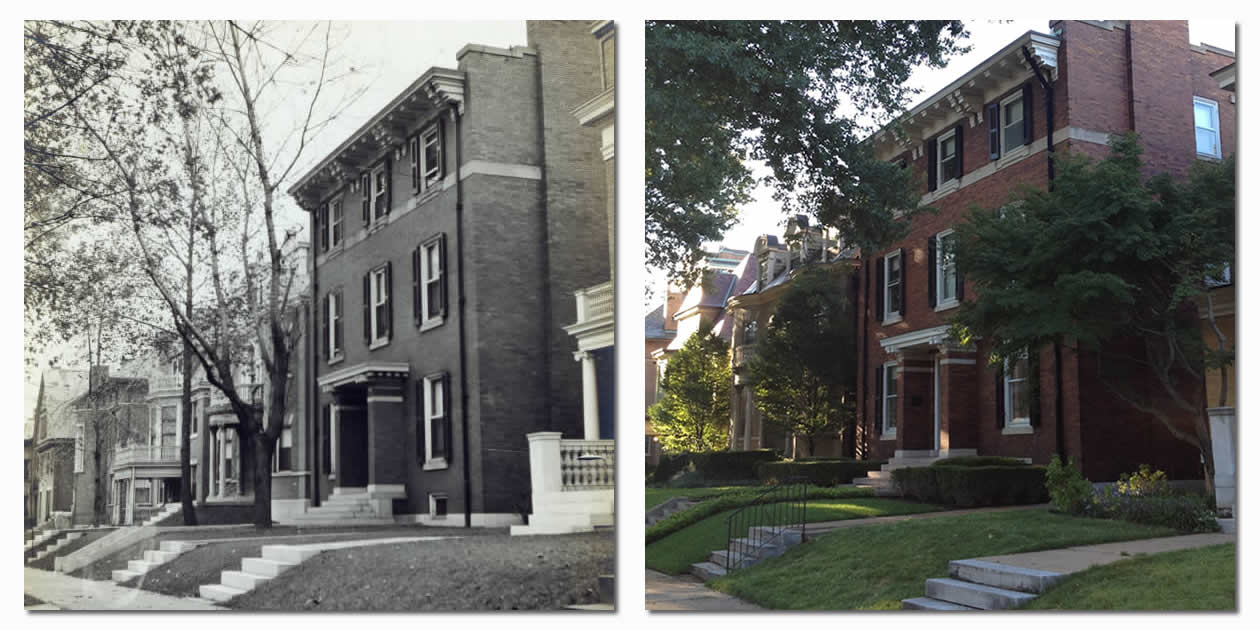
After graduating from Harvard, Eliot moved to London in 1914. There he met the poet Ezra Pound, a man who would have a profound impact on his writing and career. Pound helped Eliot get his poem The Love Song of J. Alfred Prufrock published in 1915. The success of Prufrock marked the beginning of Eliot’s career as an influential poet. Along with The Waste Land, Eliot would publish several noteworthy poems such as The Hollow Men (1925), Ash Wednesday (1930), and Four Quartets (1945), each of which earned him critical acclaim and recognition. He also gained renown as a playwright and a literary critic. In 1939, he published a book of poems named Old Possum’s Book of Practical Cats, which became the basis for Andrew Lloyd Webber’s musical Cats. In time, he’d be recognized as one of the most important poets of the 20th Century. To honor of his impressive body of work, he was awarded the 1948 Nobel Prize for Literature.
In 1929, Eliot converted to Anglicanism and became a British citizen. He lived the rest of his life in England, but he never forgot the influence St. Louis had on him. Later in life, he spoke about the impact of growing up in a river town. He fondly recalled going down to Eads Bridge to view the Mississippi when it flooded. He believed people who grew up in a river town understood rhythm more than people who didn’t. In The Four Quartets, he writes about a river in this notable stanza:
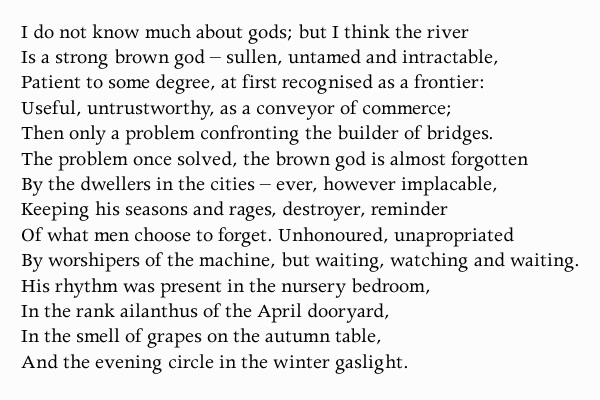
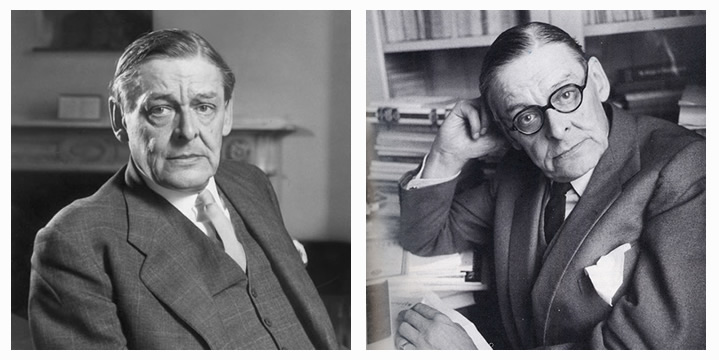 Eliot did return to his hometown on a few occasions. In 1953, Eliot returned to speak at the celebration of Washington University’s 100th anniversary. In his speech, Eliot expresses his feelings about growing up in St. Louis:
Eliot did return to his hometown on a few occasions. In 1953, Eliot returned to speak at the celebration of Washington University’s 100th anniversary. In his speech, Eliot expresses his feelings about growing up in St. Louis:
“Many other memories have invaded my mind since I received the invitation to address you today. But I think these are enough to serve as a token of my thoughts and feelings. I am very well satisfied to have having been born in St. Louis. In fact, I’d even say I think I am fortunate to have been born here rather than in Boston, or New York, or London.”
T.S. Eliot died of emphysema on 1965. His ashes are interred at St. Michael’s Church in East Coker, Somerset.
In closing, can we get a street or something named after this guy? As of now, the extent of T.S. Eliot’s recognition in St. Louis doesn’t go beyond a few plaques and a small bust in the Central West End. How about a park or a library? His grandfather has one of the Ittner schools named after him. It’s time St. Louis gave T.S. his due.
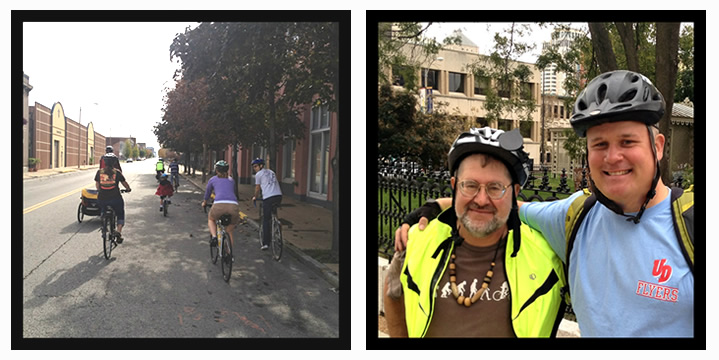
Initially, I planned to get a drink at the closet location possible to T.S. Eliot’s plaque on Locust Street. This worked out pretty well, because that meant I’d be heading to the Schlafly Tap Room, located just a couple blocks to the east. Even better, Schlafly was hosting their annual “Hop in the City” beer festival on the same day Harold showed us the plaque. Since I already had a ticket, it seemed like a perfect fit.
That is, until I read about an exchange T.S. Eliot had with an admirer in the 1950’s. The person asked him about the source of his inspiration. His reply quickly changed my mind.
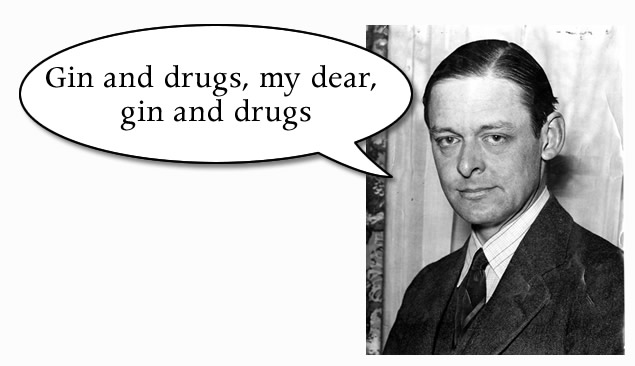
Imagine my joy when I found out T.S. Eliot drank gin. Although the Manhattan is my favorite cocktail, gin is very dear to my heart. The gin and tonic is probably my standard drink to have on the porch after a long day at work. I also love martinis. After reading his response, I started hunting around for more clues about T.S. Eliot’s drinking preferences. The news only got better. I found out he had a cat named “Noilly-Pratt” after the French vermouth brand. In the Letters of T.S. Eliot, he explains how he wrote the monologue to the verse drama Sweeney Agonistes: “I wrote it in three quarters of an hour after church time and before lunch one Sunday morning, with the assistance of half a bottle of Booth’s gin.”. Finally, I found this quote:
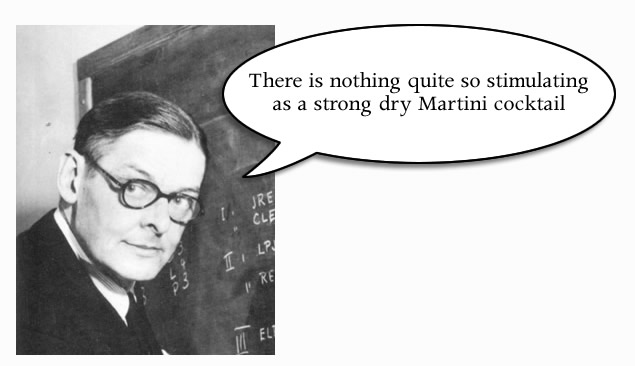
With that, there leaves no doubt that a martini is the drink for a T.S. Eliot blog post. Located just a few blocks west of T.S. Eliot’s boyhood home at 3037 Locust is the Fountain on Locust. The window of this restaurant advertises ice cream and retro cocktails. It’s a neat place with a fun and colorful decor inside. Their specialty is the “Ice Cream Martini”, and the drink menu has a full-page of varieties. I’m not an ice cream and alcohol kind of guy, so I went for the standard dry martini. The selection of gin at Fountain on Locust is a bit weak for a place advertising retro cocktails, so I the best I could get was Bombay Sapphire. Nothing against Bombay, but I was hoping to get something special like Plymouth or Broker’s. To my delight, the bartender made me an excellent martini. If it had any vermouth in it, it was probably the same amount my father used when he taught me how to make a martini: Open the vermouth bottle and just wave your hand over it a couple of times. And to top it off, it was wonderfully stirred. I can’t abide a shaken martini. Damn you James Bond! I like to think T.S. Eliot wouldn’t put up with that, either.
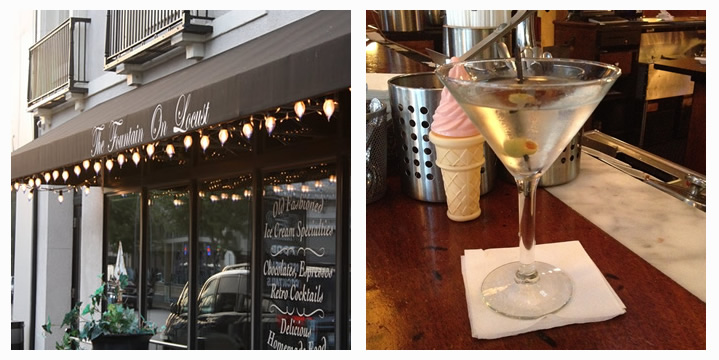

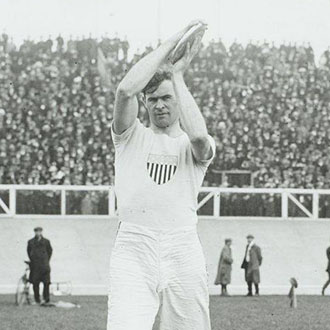
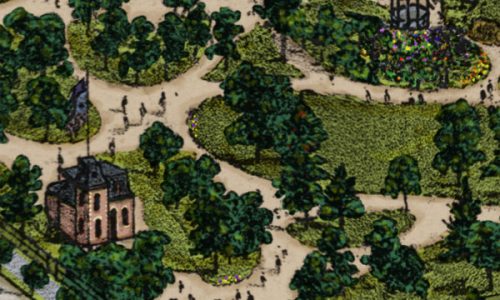
“I found out he had a cat named “Noilly-Pratt” after the French vermouth brand.”
What better honor to Eliot then, than a midtown gin bar called “Noilly-Cat.” Somebody get on it
Cameron! Eloquent as usual. And so rich with quotidian bits that all lit lovers should know! I’m about to go find some T.S. Eliot to read right now — as I recall, “The Hollow Men” spoke to me the most.
Very interesting post! I had always put Eliot in the CWE as well and didn’t know about their home on Locust or the commemorative plaque. Lots of literary history in St. Louis — have you seen the apartment building in the CWE where Tennessee Williams lived? They used to be helpfully named “The Glass Menagerie Apartments”, but I think they were rehabbed and the name changed.
Yes! The Tennessee Williams building was also a stop on the bike tour I talk about in the post. It’s called “Tennessee Apartments” now. We also stopped to see William S. Burroughs boyhood home. The owners came out and let us go inside. It was so very cool. Thanks for reading!
“The Waste Land is a momentous achievement. Read it and it’s impossible to not admire the beauty of Eliot’s prose.” …….. And there was I thinking The Waste Land was a poem ! You learn something new every day.
What a well written and informative article. I hope I’ll find more like this from Cameron elsewhere.